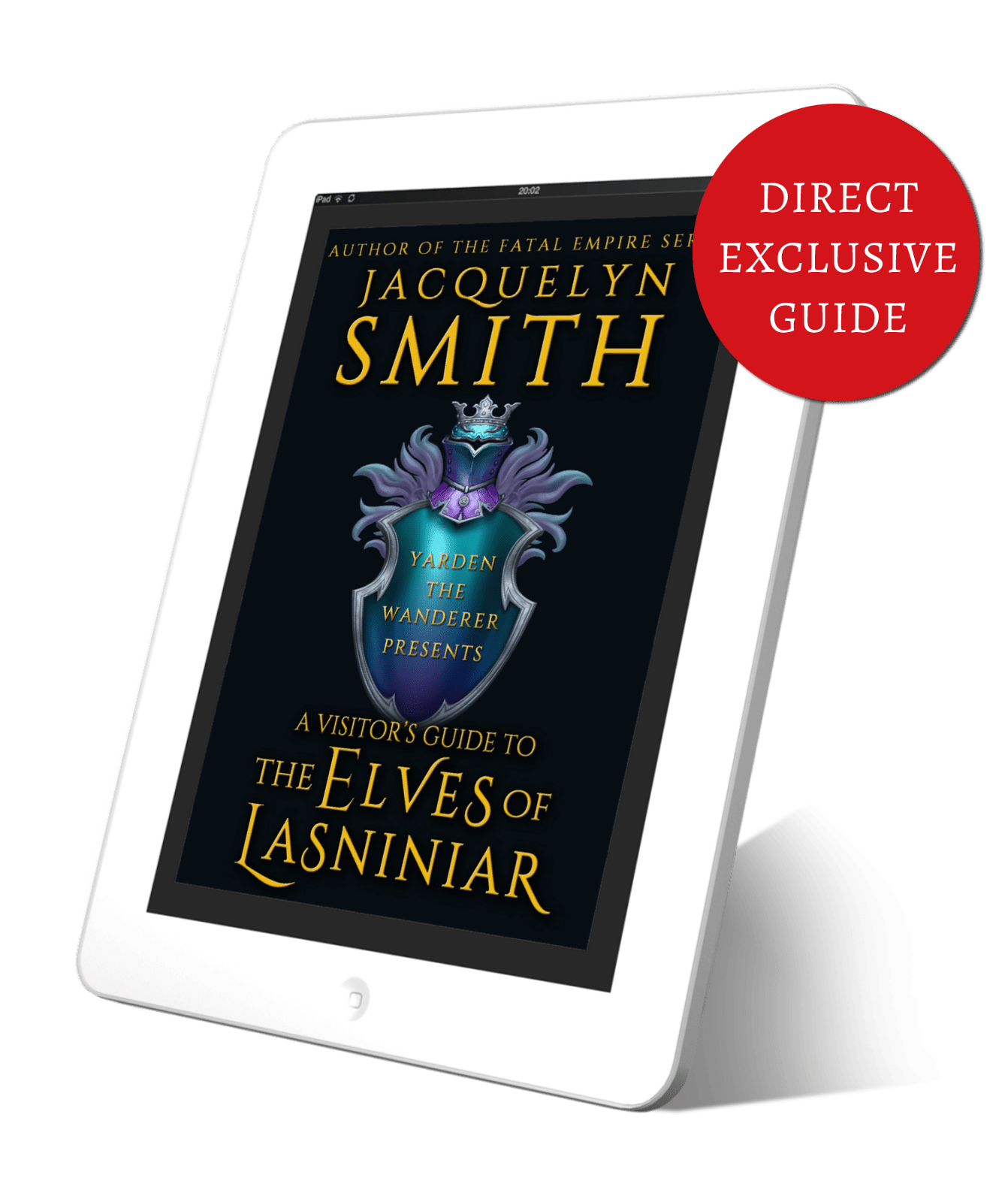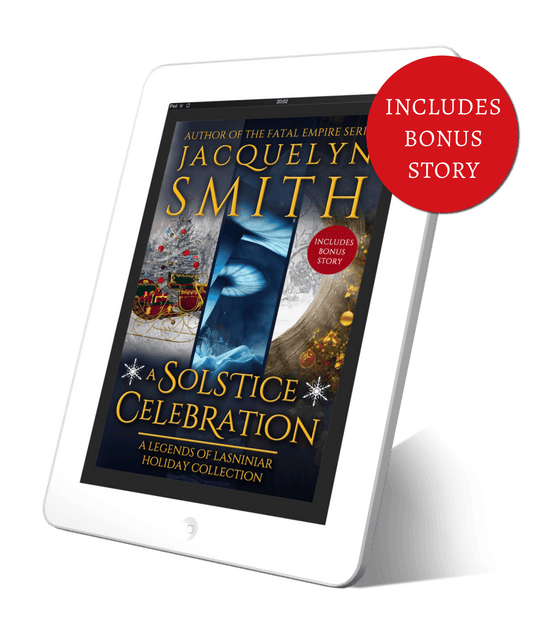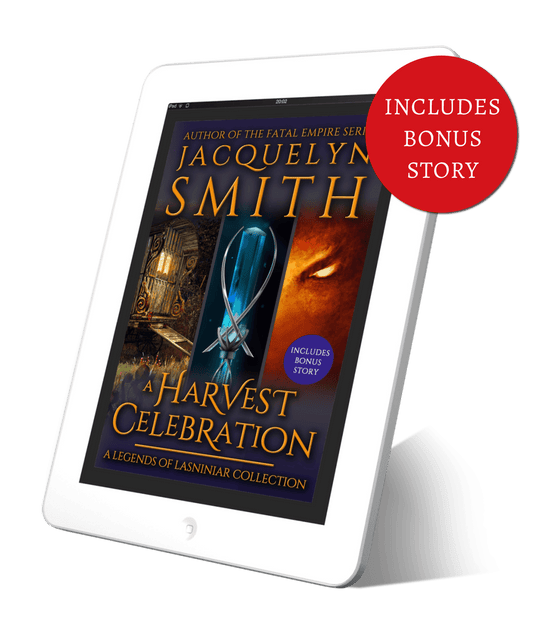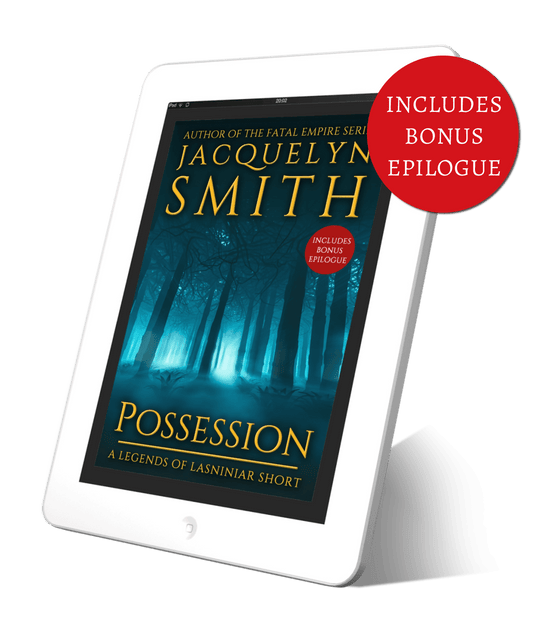A Visitor's Guide to the Elves of Lasniniar (Direct Exclusive)
A Visitor's Guide to the Elves of Lasniniar (Direct Exclusive)
Couldn't load pickup availability
Quasi-immortal, caretakers of the magical Quenya… The elves have helped to weave the vast tapestry of Lasniniar’s history since the dawn of time. No outsider has ever learned and recorded their rich culture and history.
...Until now.
Join Yarden the Wanderer—the Shining Kingdom’s foremost follower of the Keeper of Wonder—as he guides you through the tribal tribulations and reincarnation complications of these elusive entities in this special scroll, recorded by the scribe of the Fatal Empire fantasy series, Jacquelyn Smith.
Impress every elf you encounter with your noteworthy knowledge of such topics as:
- Elven Origins and History
- Magical Artifacts
- Quenya Couture
- Allies and Enemies
- Holidays and Observances
- Elven Vocabulary and Pronunciation
...And more!
Please note: Yarden the Wanderer and the Temple of the Keeper of Wonder in no way claim responsibility for any harm or mishap that befalls visitors of the realm of Lasniniar—including, but not limited to enslavement by a drakhal.
Exclusively available direct from Jacquelyn’s store.
READ A SAMPLE
READ A SAMPLE
A Wanderer's Welcome
Greetings, fellow adventurer, and welcome to the legendary realm of Lasniniar! (If by chance you’ve never heard of this fair land, you are not alone. Even I—the Shining Kingdom’s most diversely-traveled devotee of the Keeper of Wonder—had not heard of the world of Lasniniar until the winds of fate, and perhaps the Thousand-Faced Goddess herself, brought me here.)
If you are a fellow citizen of the Shining Kingdom, or perhaps a visitor from the Dharakmeni Empire, you will find the elves of Lasniniar quite different from those who make their hidden home in the Elven Forest that borders our neighboring lands back on our own world. Even though the elves of Lasniniar are quite insular when compared to the humans and dwarves who reside here, they are practically social butterflies compared to the elves of our own realm. They are also more varied in type and social structure.
The elves are one of the eldest races of Lasniniar, and their immortal influence has heavily shaped the local history, as well as the land itself. I count myself fortunate to have been steered by the goddess into their midst, where I have spent much of my time learning their history and studying their ways. Now, I will pass my extensive learnings on to you in the pages of this guide, so that you may also become familiar with the wondrous ways of the elves of Lasniniar, should you ever have the opportunity to meet them.
~ Yarden the Wanderer
The Origin of the Elves
Thousands of years ago, before the moon, sun, and stars, bodiless spirits roamed a remote island realm that later became known as Ralvaniar, which is no more. Over time, many of these spirits took physical form. Some of the spirits that were aligned with the forces of good incarnated as elves, or their aquatic cousins, the Sea Folk. Others became dragons (of good or evil alignment), or creatures of darkness—the blood-drinking drakhalu or the Fire Folk. Those spirits that did not opt to incarnate into physical form were eventually confined to the Void and became known as the Unborn.
The elves of Lasniniar are of a similar physical type to the ones who live in the Elven Forest that borders on the Dharakmeni Empire, in that they share the same tall, lean stature, angular features, and pointed ears. They are naturally athletic and agile. Their Sea Folk cousins have the upper body of an elf and a lower body resembling the long tail of a fish. The elves of Lasniniar are land dwellers, while the Sea Folk (as their name implies) make their home beneath the waves of the ocean.
Elven Magic
Unlike the citizens of the Shining Kingdom or the Dharakmeni Empire, the people of Lasniniar do not seem to have heard of the Thousand-Faced Goddess. Outside of ancestor worship (including the deceased among Lesser Humans, and Galrin, the First Father of the dwarves), no deities have been worshiped by any of the races of Lasniniar until recent times. (Even then, these so-called deities have not turned out to be entirely what they seemed.)
The elves do not practice ancestor worship, but are acolytes of a force known as the Quenya, which is also the source of their magic (and most of the magic in Lasniniar for that matter). The Quenya can best be described as a somewhat sentient power that is aligned with the forces of life. It appears as a ball of shifting, rainbow light that can be felt as a tingling sensation against the skin when in its presence, even for those who are not elves. The moment it was first uncovered from the earth thousands of years ago by the dark dragon Lystari, it changed the world forever, immolating her, and creating the sun, moon, and stars as she fled to the skies to escape its fiery wrath. (This event created no small amount of upheaval among the residents of Ralvaniar, who had known nothing but perpetual darkness until that point, causing many to believe the world was coming to an end.)
As a race aligned with the forces of light and life, the elves were the natural caretakers of the Quenya, but the lure of the Quenya’s power called to the dark creatures as well. They perpetually plotted to procure it, even though its very touch was death or destruction to any with evil intent. The Quenya is not meant to be used in ways that go against its nature. Any attempt to do so has ended in some form of disaster. The elves guard the Quenya fiercely, housing it in the hollow of an ancient tree that lies within the heart of Light Elf territory (currently Melaquenya).
The elves do not have any formalized form of religion, and they do not worship the Quenya outright. Instead, every elf is born with a connection to it. This connection allows them to have some sense of their intended purpose. The stronger their connection, the clearer their sense of destiny. Insight may be gained by communing with the Quenya’s presence, or even through seemingly prescient glimpses of foresight (either waking or sleeping). For most elves, their sense of purpose is merely a persistent, internal pull, without the need for dreams or visions. But those few elves with the strongest connection to the Quenya are capable of using it to induce visions of the possible future, or even of channeling its power to perform acts of magic.
These acts of magic must remain within the alignment of the Quenya’s purpose (unless the user wishes to risk their soul or sanity). While this might cause one to assume that using its power to harm or destroy would be suicidal, that is not strictly the case. Many of the creatures of darkness find the light of the Quenya physically painful or even deadly. Thus, a shaft of magical light (harmless to creatures that are not aligned with the darkness) can be wielded as a weapon. But the Quenya is usually used for more passive purposes, such as magical protection, or imbuing artifacts with power. Those few elves with the strongest connection to the Quenya do not need to be in physical contact with it when channeling its power, and can tap into it even from an incredible distance.
In addition to guiding the lives of the elves, the Quenya also dictates the fate of their souls upon their death and beyond. While the elves are immortal creatures, and may live for thousands of years, once they have achieved their life’s purpose, they pass into death before reincarnating. How much they remember from their previous life (or lives) depends on the strength of their connection to the Quenya.
The manner of an elf’s death also has bearing on their memories and next life. A violent or untimely passing can weaken an elf’s connection to the Quenya, leaving them to languish in the realm known as Oblivion before potentially being reborn (unless they are sentenced there for eternity). If their end was violent, they may have no recollection of any previous lives at all. In this case, they may return as a human, rather than an elf (with the potential to eventually reincarnate as an elf once more, depending on the actions taken during their human incarnation). This last, rare case is a closely guarded secret, which the humans of Lasniniar are unaware, lest they begin to expect reincarnation among their kind to become a regular occurrence.
- EBOOKS ARE DELIVERED INSTANTLY VIA EMAIL BY BOOKFUNNEL.
- SEND TO YOUR PREFERRED DEVICE AND ENJOY!
- QUESTIONS? CHECK OUT THE FAQ.
Share

Books in this series:
-
The Legends of Lasniniar Starter Collection (Bonus Edition)
Regular price $7.99 USDRegular priceUnit price / per$14.96 USDSale price $7.99 USDSale -
A Solstice Celebration: A Legends of Lasniniar Holiday Collection (Bonus Edition)
Regular price $7.99 USDRegular priceUnit price / per$15.96 USDSale price $7.99 USDSale -
A Harvest Celebration: A Legends of Lasniniar Collection (Bonus Edition)
Regular price $7.99 USDRegular priceUnit price / per$15.96 USDSale price $7.99 USDSale -
Possession: A Legends of Lasniniar Short (Bonus Edition)
Regular price $3.99 USDRegular priceUnit price / per




